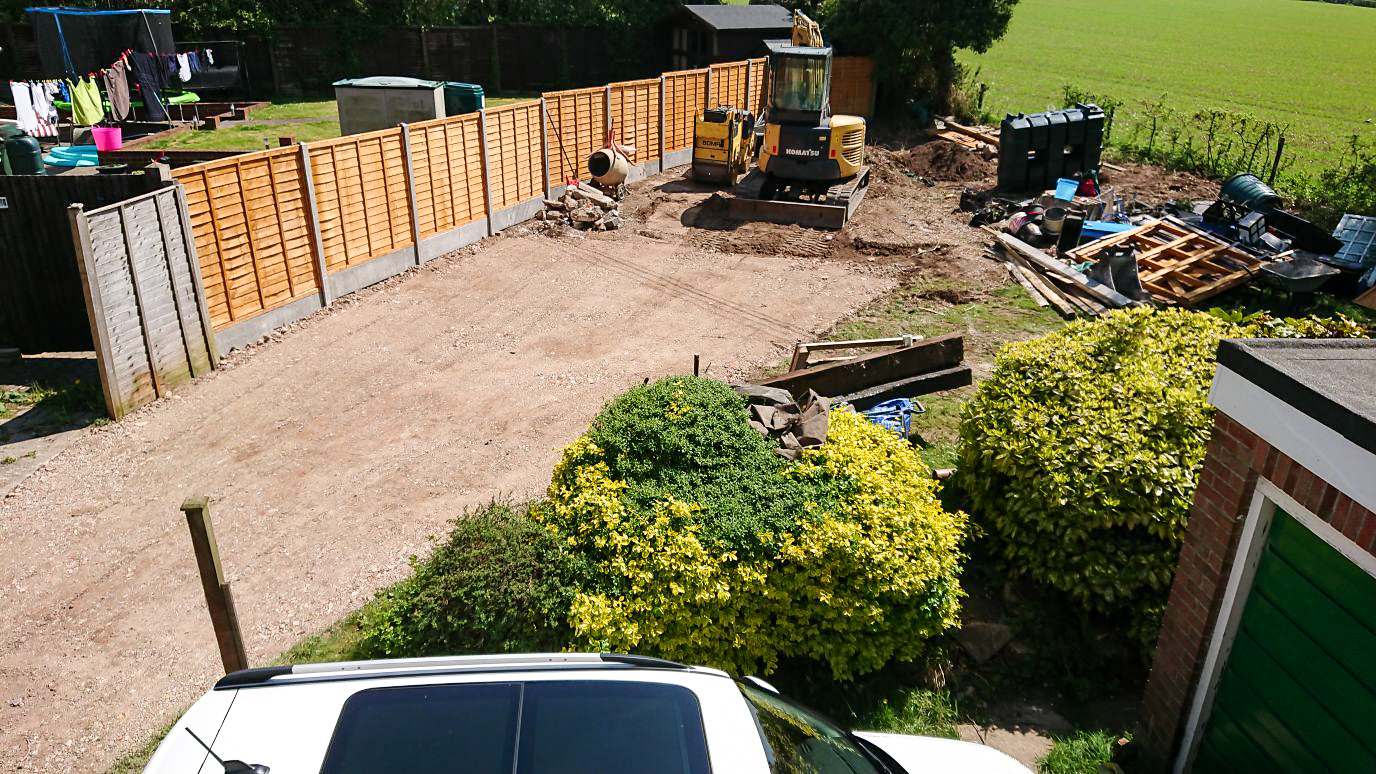Building an off-street parking space or driveway
Building an off-street parking space or driveway
Parking is a huge problem in many areas and it’s likely to get worse before it gets better. There are more cars on the road and councils are clamping down on on-street parking even in residential areas. Building a parking space in your front garden makes life easier if your street is overcrowded but how should you go about it?
How much parking space will I need?
An off-street parking spot can add value to your property and make it easier to sell, especially in city centres where parking is at a premium. Depending on the size of your front garden and the number of cars you have, your parking space may take up just a part of the whole of your front garden. The standard space requirement is 4.8m long by 2.4m wide. Allow an extra 2m if the parking area is in front of a gate or garage. When measuring up, make sure your car won’t overhang the pavement or road.
Do I need planning permission?
Depending on your individual circumstances, you may need planning permission. Listed buildings and conservation areas will almost certainly need permission to convert a front garden into a parking space. Similarly, if you need to lower the kerb and pavement outside your property for driveway access, you will need permission from the local highways authority. Check your council’s website for guidance and an application form. Expect to pay a non-refundable fee between £100 to £350 and remember that approval is not automatic.
What are the criteria for a new dropped kerb?
The council will send out an engineer to inspect the site and assess its suitability. This includes checking your front garden is big enough to park a car and if there are any street lights, pipes or cables that might need to be moved or protected. The council will only give the thumbs-up if planners are convinced you will be able to see pedestrians and vehicles well enough to drive out of your property without danger to yourself or others. You may be refused if it’s near a busy junction or visibility is obscured by a bend in the road, trees or bus stop.
Who builds the new dropped kerb?
Some council highways departments will complete the work once permission has been granted, or you may be given a list of approved contractors to choose from. Councils have different policies. Hampshire County Council, for example, asks people to find their own private contractor. Your chosen contractor must have public liability insurance, have operatives and supervisors who are trained and accredited to the requirements of the Codes of Practice under the New Roads and Street Works Act 1981. They will also need to obtain a Section 171 Road Opening Licence to excavate the highway. It’s your responsibility as the home-owner to make sure they have the relevant permissions. The builder will have to follow construction specifications for a dropped kerb.
Adding a drive or paved space
Generally, you don’t need permission for a new drive of any size if it has a surface that allows water to drain through, such as gravel or permeable block paving. Nor will you if the parking space directs rainwater to a border or lawn to allow it to drain naturally. Without this, water could collect on the surface and flood your own and nearby properties, potentially causing structural damage. However, planning permission will be required if you are covering an area of five metres or more in an impermeable material. Similarly, if you want to create off-street parking adjacent to a listed building or in a conservation area, planning permission may be required.

Which driveway material is best?
It can be a mistake to think that if a garden is already paved over it’s suitable for parking. It may not have enough hardcore underneath it to take the weight of a car, for example. If it hasn’t been designed to park on, you many need to start from scratch. Consider choosing a driveway material that is sympathetic to the architecture of your home. York stone or clay pavers team well with traditional red-brick houses, for example. Options include permeable concrete block paving and bonded gravel. Loose gravel is cheaper than paving but a solid sub-base and sturdy edgings are essential to stop it spilling out onto the pavement.
How much will a new off-street parking space cost?
Prices will vary with your location, kerb edgings, the excavation/removal of unwanted material, amount of geotextile membrance, size of parking space and quantities of sub-base aggregate. Your choice of driveway material will also make a massive difference. Prices vary so it’s best to get a number of quotes to compare. As a rough guide, expect to pay between £2,000 to £3,000 for a 50m sq gravel drive and £3,000-plus for the same area in block paving. If you need to lower the kerb, that could add another £900 to £1,500, depending on location, size and work involved.
It’s worth remembering paved front gardens can look bleak and there’s concern from environmentalists about loss of greenery, so make use of corners and edges for planting to add kerb appeal. Scented evergreen shrubs, such as lavender, are favourites and won’t grow tall.
